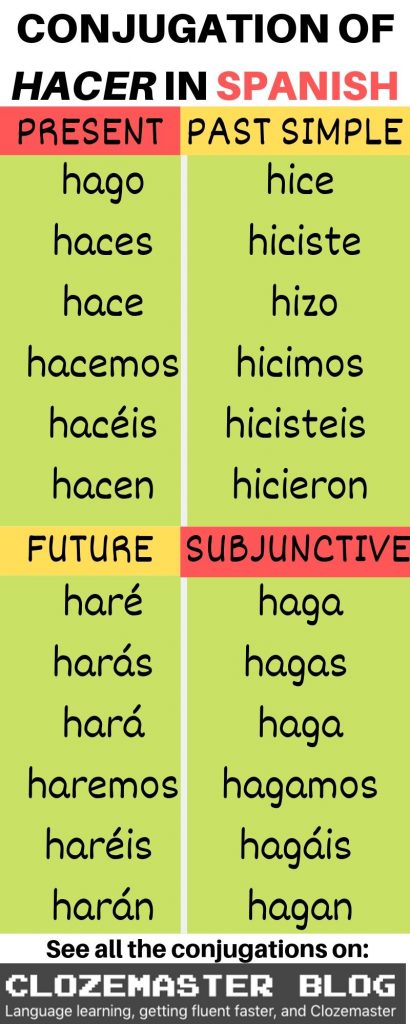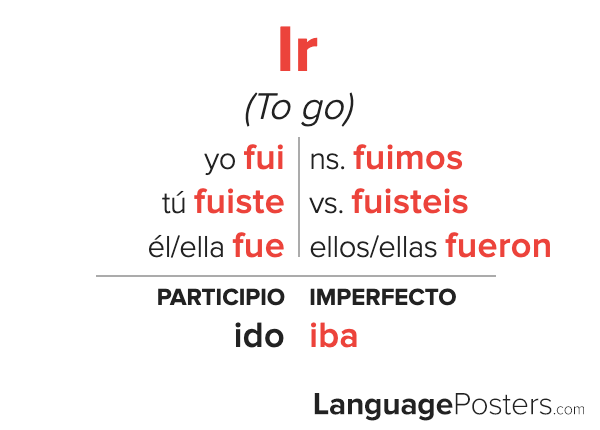



Here, instead of using a C at the end, you’ll use the letter J for this IR conjugation. Verbs like conducir will follow this pattern: Subject This is also true for the Spanish preterite tense. If a Spanish verb ends in -cir, it’s most likely going to be irregular in almost every verb tense. So while you might need to memorize a couple of extra irregular verbs, for the most part, you just need to remember irregular verb categories. This means that there are irregular verbs for the -ir conjugation, but many of them (but not all) follow a similar pattern. In general, most irregular verbs can be divided into different categories. Let’s look at those categories now: Irregular Verbs The problem comes in the fact that there are many irregular verbs for the -ir conjugation. – They shared the dessert.Īs you can see here, the Spanish preterite tense for regular verbs isn’t very difficult. ¿Quién escribió esto el la pizarra? – Who wrote this on the board?.Here are some examples to see the -ir conjugation in context. This pattern is the same for all regular verbs in the preterite tense. Here’s a helpful chart of the IR preterite tense conjugations: Subjectįor Spanish verbs in the preterite tense, make sure you pay close attention to the accent mark ! The first person, the third person singular, and the second person formal singular all use accent marks in the Spanish preterite tense. Just like in other tenses, to form the Spanish preterite tense, you start by removing the -ir ending, and then by substituting a new ending based on the subject.
To go in past tense spanish how to#
The first step to learning how to use this -ir conjugation is practicing how to actually form the verbs. It’s one of the trickier Spanish verb forms to work with, so that’s why you have an entire article dedicated to it. So today, we’ll be going over how to conjugate -ir verbs in the Spanish preterite tense. However – this isn’t a rule at all, rather more like a general guideline to follow if you don’t have any better guesses. In many ways, the Spanish preterite tense is the most direct translation of the English simple past tense.

The Spanish language has 9 different ways to express the past, and the preterite tense is one of the most important to learn.


 0 kommentar(er)
0 kommentar(er)
